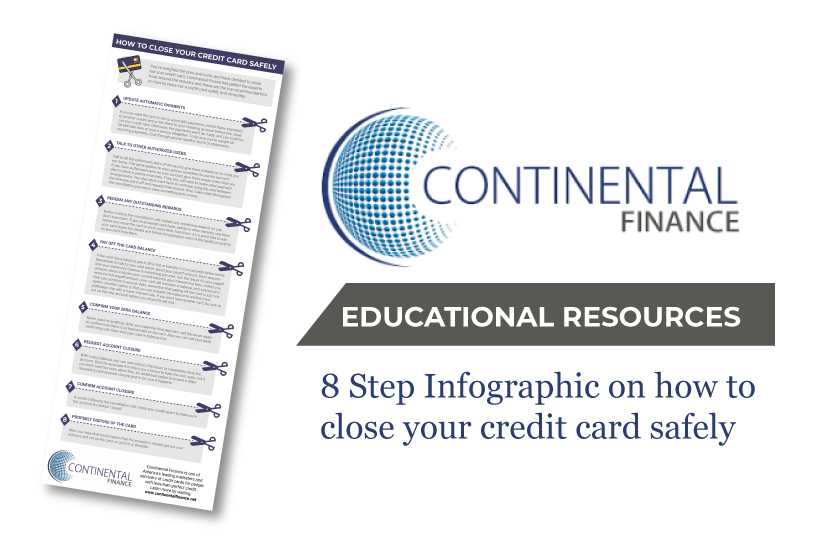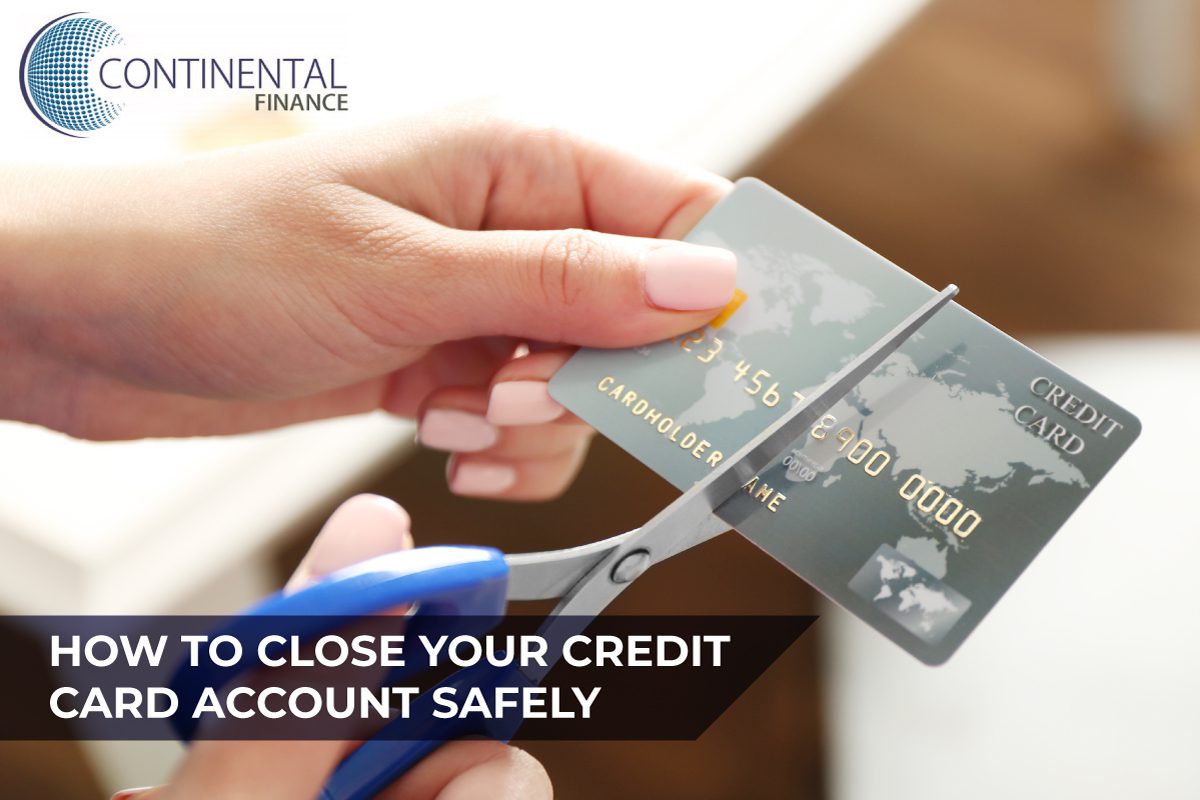Do you have an unused card or open account at zero balance? Perhaps an old credit card that you haven’t even taken out of your wallet in years and only keep it around because it’s your oldest account?
Are you afraid that even with a sterling payment history closing that account will affect your FICO score or any other free credit score from credit bureaus because canceling a card will have a negative impact on your credit utilization rate?
While there are many good reasons to keep an unused credit card with zero balance that can help you maintain good credit, there are ways of canceling a card and closing out your account that are safe and proper.
So if you’ve weighed the pros and cons, and have decided to close out your credit card, Continental Finance has polled the experts from around the industry and these are the top recommendations on how to close out a credit card safely and smoothly. Doing so will stave off any credit utilization ratio issues, protect your credit score and avoid any nasty surprises like annual fees penalties.

It starts with step one, update automatic payments.
- If you’ve used the card to set up automatic payments with the credit card servicer, switch those payments to another credit card or link them to your checking account before you close out your credit card. Otherwise, the payments won’t be made, and you could be hit with added fees from late payments, higher interest rates, or lose a service altogether. To be sure you’ve caught all recurring payments, look through several months’ worth of statements.

The next step is to talk to other authorized users
- While you may be the primary cardholder, you must consider all other users of the card. Talk to all the authorized users of the card to give them a heads up on what you are doing. The same applies to every person permitted to use the account. If you have authorized users on your account, give them ample notice that you plan to close it and by what date. They, too, will need to make other payment arrangements. You also don’t want them to continue using the card between the time you pay it off and request final closure. Also, take notes throughout the cancellation process in case something goes wrong.

Then make sure you redeem any rewards
- Before making the cancellation call, redeem any remaining rewards so you don’t lose them. Beyond just your available credit, if you’ve amassed cash back, points or other rewards, use them before you close the card or you’ll most likely lose them. It’s a good idea to ask your card servicer for details and follow the expiration rules of the loyalty programs so you don’t lose them.

Now you pay off the card balance
- If the card has a balance, pay it off in full or get a balance transfer to a card with better terms. Remember no matter the credit limit on your card, you should talk to your credit card servicer about your payoff amount. Don’t assume that your statement balance is everything you owe. Ask the credit card servicer for your payoff amount, which includes your current balance, plus interest and fees. Unless you remit the full payoff amount, your card will maintain a balance, and interest and fees can continue to accrue. Also, remember that paying off the card is just one option. Another option is that you can transfer the balance to another card, preferably one with a lower interest rate. If you don’t have another card, be sure to set up the new account before you close the old one.

Then confirm there is actually zero balance
- Never assume anything. After you make the final payment, call the credit card servicer again to confirm that there is no balance left on the card. Also you can call your bank, confirming with them that your card is balance-free. You want to ensure the total credit is available and the balance is zero.

Now request account closure
- With a zero balance and the full amount of credit in your credit card balance, you can now instruct the credit card servicer to completely close the account. Don’t be surprised if the credit card company offers you a bonus to keep the card open, or pushes you to try a new card; but if you don’t want the card, stand firm. An additional option is to send a letter requesting card account closure, just to be sure it happens.

Then confirm the account is really closed
- A month following the cancellation call, check your credit report to make sure the account is marked “closed.” Your credit history is an important aspect of your credit score, so canceling a card safely and properly needs confirmation. The bottom line is to make absolutely sure you have a closed account.

Finally, dispose of your card
- After you have final confirmation that the account is closed, get out your scissors and cut up the card, or put it in a shredder.
Download The Infographic

If you’d like to keep this step-by-step process handy, download our infographic. That way you will always have the information you need on how to properly close accounts for any future new credit cards or credit accounts.
People Also Read
- Closing a Paid Off Credit Card Account: Good or Bad?
- How to Avoid Credit Card Debt
- How to Stop Impulse Spending with Your Credit Card
- Credit Cards vs. Charge Cards: What’s the difference?
Continental Finance is one of America’s leading marketers and servicers of credit cards for people with less-than-perfect credit. Learn more by visiting ContinentalFinance.net



